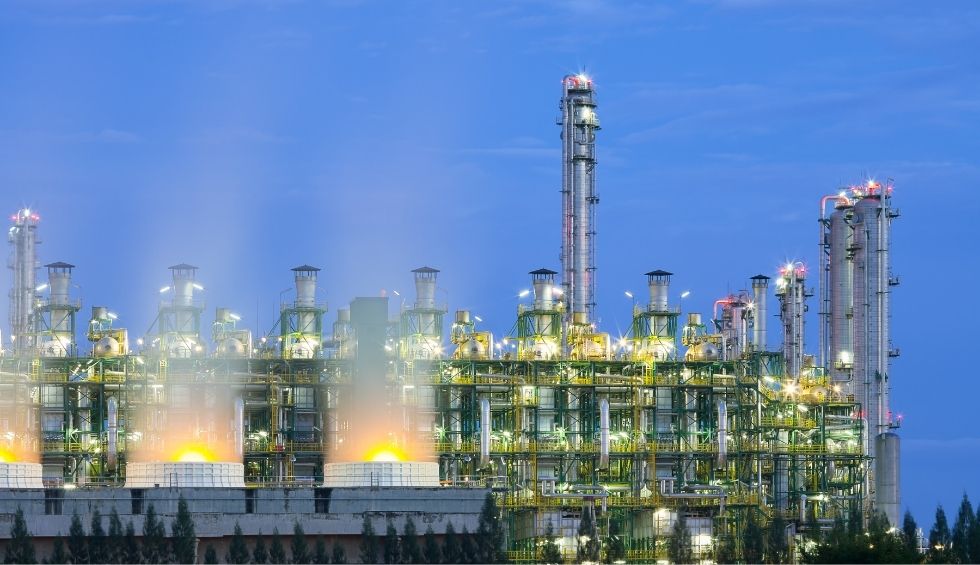Until recently, a lot of the focus on sustainable megaprojects and construction has focused on operational emissions associated with the physical building, such as the new oil refinery, pulp mill or power plant. Reducing waste materials as well as creating opportunities for recycling and reusing post-consumption waste material has been a hot-topic in relation to operational plants and manufacturing for a long time. However, we’re moving towards increased recognition on the importance of material efficiency during engineering, procurement and construction phases of a capital project. Material efficiency is delivering the same end result with reduced amounts or lower grades of raw materials.
The challenges of material efficiency for megaprojects
Businesses are expected to have to spend increasing amounts of their revenues on capital expenses as they modernize outdated plants and build new ones that meet intensifying sustainability requirements. While many sustainability requirements are mandated by law, a lot of organizations are seeking to meet even stricter sustainability goals set by themselves. Furthermore, capital projects across industries are already notorious for delays and cost overruns due to their vast scale, complexity, and the long timelines. It is estimated that 98% of megaprojects end up running at least 30% over budget and 77% of projects run at least 40% late. According to Bain’s global analysis of 76 large energy and natural resources projects, 84% of projects weren’t completed on time averaging delays of more than two years. As sustainability requirements become more rigorous, these projects will become evermore expensive and complex. For example, some businesses in the mining industry have opted to use ocean water during construction so that they don’t drain the fresh groundwater supply. Using ocean water doesn’t come without it’s challenges though- transporting and desalinating oceanwater can add 15%-30% in costs to a multibillion dollar mining investment. In a nutshell, investing in materials efficiency can increase costs in the short-term.
The benefits of material efficiency in mega projects
Multiple studies, including the report by World Green Building Council2, have indicated that construction projects save money and resources in the long run, if sustainability and material efficiency is planned well at the outset. Focusing on material efficiency early on in the project will lead to the largest cost savings and optimized project outcomes. Material efficiency in megaprojects is largely achieved during the design and planning processes, but additional savings and value can be achieved through collaboration with the entire capital project supply chain. For example, minimizing the use of raw materials and avoiding over-ordering will result in cost-benefits in the procurement stage but also help reduce costly disposal charges.
In addition to cost-savings in the long run, material efficiency will also reduce environmental impact. Recycling and reuse practices have improved tremendously in megaprojects, but with proper planning early on in the project, even more waste can be reduced and reclaimed. For example the British Standard BS 8895-1:20131 document can help architects, civil engineers, and other members of the project teams achieve materials efficiency.
Lastly, sustainability, recycling and reuse megatrends are chancing the marketplace and no business sectors remain unaffected. Even if material efficiency may increase certain costs in the short-term, the long-term enhanced reputation will provide tangible economic benefit. There are multiple examples from near-history which prove, that businesses who don’t adapt to the marketplace, simply don’t survive. For example, at one point there were 80 million Blackberry users in the world, and in the mid- to late 2000’s, the primary mode of business and personal communication was the Blackberry messenger. However, Blackberry ignored touch-screen based technology and by 2016 their market share dropped to 0.2% in 2016. When looking 40 years into the future, how many businesses do you envision operating, that don’t follow sustainability requirements and meet consumer expectations in regards to environmental impacts?
Steps for improving material efficiency in capital projects
- Opt for materials efficient structural forms (look at choice of grid size, avoid ordering greater amounts or strengths than required).
- Avoid overdesigning, such as specifying more materials than required for structural purpose.
- Utilize less material in product designs.
- Avoid over-ordering materials (this can be common to avoid running out of materials during construction).
- Ensure that suppliers avoid over-delivery.
- Plan for onsite waste even prior to any materials arriving at site. What will you do with materials not used for construction and how can you minimize the environmental impact of unused materials?
- Procure sustainable products which are typically higher in quality and last longer. This means that you don’t have to reorder and replace equipment during maintenance as often, which reduces wastes and typically also reduces over-all costs.
- Make a plan for reusing and recycling of product components.
- Design manufacturing processes at the plants to use less energy, less water or less raw materials.
- Use 3D modelling to plan materials accurately.
- Virtually simulate your project site to discover materials issues even before materials are delivered to the site.
- Procure recycled or alternative sustainable construction materials.
- Use BIM with the project team to rectify materials errors even before purchase orders are placed and unnecessary materials arrive at site.
- Minimize and optimize materials transport and packaging.
The future of material efficiency in capital projects
We’re expecting to see the trends of sustainability and environmental initiatives continue to rise. Companies in the project business sector have began to place even more emphasis on sustainability of their projects to prepare for the future, manage risks, improve their reputation and attract top talent.
Did you enjoy this post? You might also be interested in our blog posts on
- Handling material flows for capital projects via Excels
- Review from material suppliers on modern materials management tools in capital projects
- Implementing new software in capital projects- how to get supplier buy-in?
Listen to the topic on “The Heavy Industry Sound” podcast

Heljä Muinonen
Sales & Marketing (Valpas & MHS)
email: helja.muinonen@loginets.com
phone: +358 40 934 5189
Read about our material tracking system for megaprojects
Sources:
https://iglcstorage.blob.core.windows.net/papers/attachment-b3ea7065-7030-46ce-aacb-3e909b7aa107.pdf
https://www.valmet.com/media/articles/all-articles/material-efficiency-use-less-get-more/
Ruuska, A., & Häkkinen, T. (2014). Material Efficiency of Building Construction. Buildings, 4(3), 266-294. https://doi.org/10.3390/buildings4030266
https://blog.allplan.com/en/construction-waste-and-materials-efficiency
https://www.e-careers.com/connected/10-businesses-that-failed-to-adapt


